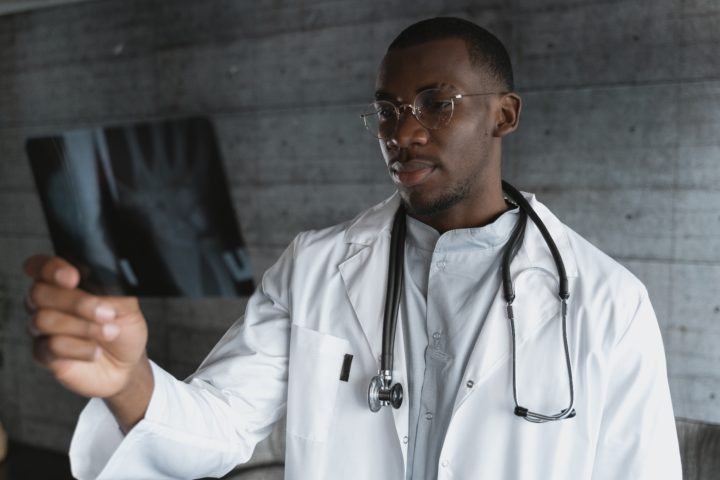Even though hospitals are supposed to be one of the safest facilities in the world, unfortunately, even there you can contract some diseases or infections. Healthcare-associated infections, or also known as HAIs represent infections that happen while you are in the hospital.
People who have various medical devices, such as urinary catheters, central lines, ventilators, or who have undergone surgical procedures are at relatively high risk of getting a healthcare-associated infection. A lesser risk, but one that people should still be aware of nonetheless, is that of medical negligence. This is obviously something that no healthcare professional wants to have brought upon them, but things can go wrong where they perhaps could have been prevented, and affected individuals may call upon someone like gadsbywicks.co.uk to help them recover financial compensation for their situation.
Although this is still a huge issue at some hospitals, luckily, most of them are preventable. Furthermore, the prevention, as well as management of this problem has advanced in the last couple of years, with professional Hospital infection control consulting teams working with hospital management to evaluate current measures, and put new protocols in place. Now, is there anything else that can be done? Yes! Below you can see what and how!
Methods That Can Be Used To Avoid HAIs
Hand Hygiene
Generally speaking, no matter where you work or what you do, proper hand hygiene is extremely important. Plus, not to mention that it is one of the easiest, yet most affordable ways to reduce any prevalence of HAIs as well as the spreading of AMR, which is antimicrobial resistance.
If healthcare providers have clean hands constantly, they are going to prevent the spreading of microorganisms, along with the ones that are resistant to antibiotics. These are frequently difficult to treat and at times, untreatable.
According to the WHO, there are five crucial moments when all healthcare providers must perform hand hygiene and they include:
- Before touching a patient
- Before aseptic/clean procedures
- After body fluid risk/exposure
- After touching a patient
- After touching the surroundings of a patient
Although practically every healthcare institution is familiar with these rules and is aware of the consequences, sadly, there are a lot of institutions that have poor hand hygiene. They need to bear in mind that something like this reflects their attitude, awareness, and behavior towards infection control and prevention.
Infection Control Products
From bacteria to viruses, generally speaking, our lives are continuously filled with exposure to various germs. While some of them are not so harmful, there are those that can seriously jeopardize our health.
Luckily, there are some products (especially the ones that employ ultraviolet-C (UVC) light to eliminate pathogens) that can be of huge help. If you want to know more about it, read more here to provide yourself with some useful information. Namely, these types of products are great because they can alleviate the risk of any type of infection spread caused by the pathogens at the hospital.
What Else Must Be Done?
Screening Patients
If multidrug-resistant organisms are detected on time it is going to prevent many serious damages. Therefore, screening of preoperative patients, along with decolonization of carriers is going to drastically decrease postoperative infections.
Observation cultures for CRE (carbapenem-resistant Enterobacteriaceae) is one of the best strategies to deal with this issue. Active checking for CRE by utilizing rectal surveillance cultures has been proven to be extremely effective when it is part of an extensive infection follow-up initiative in stopping the spread of CRE in healthcare institutions.
That’s why isolation of infected patients is one of the biggest steps when it comes to infection control and prevention. The main goal is simply to prevent any transference of microorganisms from a person who is infected to other patients, healthcare providers, hospital visitors, and many others.
Isolating an individual who has highly resistant bacteria is crucial and extremely useful in preventing patient-to-patient spread. Hence, isolation measures must be a huge part of any control program and infection prevention.
Environmental Hygiene
This is also one of the key steps when it comes to infection prevention in healthcare facilities. Hospitals that are contaminated play a major role in the transmission of microorganisms, such as Clostridium difficile as well as numerous multidrug-resistant organisms, including Staphylococcus aureus, as well as vancomycin-resistant enterococci.
That’s why proper hygiene of surfaces, along with the equipment which healthcare providers and patients use is essential to decrease exposure. Many scientists think that hospitals may act as a crucial reservoir of various nosocomial pathogens in numerous environments, for example, water systems, surfaces, medical equipment, etc.
It’s important to accentuate that healthcare institutions are extremely complex realities that come with different crucial points. Microbial contamination can be caused by the healthcare providers, same inpatients, and relatives.
The whole point of environmental hygiene is to decrease the infection that may be seen on surfaces, as well as to decrease the risk of transfer of various microorganisms from one individual to another.
Although at first glance it may seem counterintuitive, hospitals can increase the chances of having an infection. That’s why various steps must be taken to prevent it and this article has shown several strategies that can be implemented to decrease the risk.
















